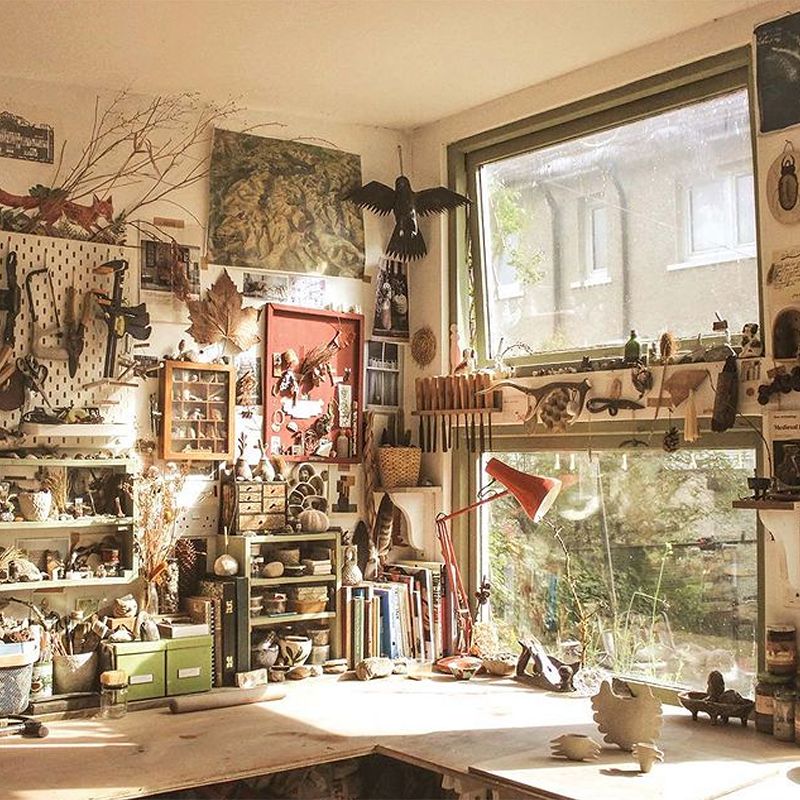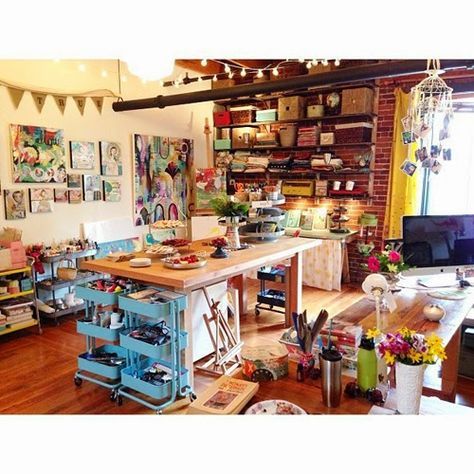





Have you ever walked into an artist’s art space, where paint brushes dance on the canvas, creativity flows through every corner, and the vibrant colors breathe life into the space?
Making the most of your art space is vital for any artistic journey, whether you’re a beginner or a seasoned professional. Utilizing every inch effectively, organizing your materials, and creating a space that reflects your artistic soul can enhance productivity while fueling your creative spirit.
But how does one transform a mundane space into an enchanting realm of artistic expression? The secret lies in making the most of every nook, cranny, and corner of your art space, strategically curating an inspirational oasis tailored to your individual needs and style.
In this article, we shall embark on a journey toward the discovery of the most ingenious methods and techniques to elevate your art space into a captivating and efficient realm of creative genius.
So, grab your color palette, and let us together unleash the boundless potential of your personal artistic sanctuary.
But before that let me give you a summary of this article that will help you in knowing what you can learn from it.
This article provides an in-depth guide on how to create a personal and inspiring art space, tailored to each individual artist’s needs and preferences. By assessing the space, setting a budget, and choosing the right furniture, anyone can turn their mundane space into a captivating artistic oasis. Additionally, investing in quality lighting and storage solutions, as well as personal touches like artwork or flower pots, will help any artist make the most of their art space and elevate their creative process. Finally, by taking the time to enjoy the space, allowing oneself to experiment, and inviting friends and family to join, artists can make their art space a stimulating and inviting environment that will bring their artistic visions to life.
Now let’s start with the first step of the process and that is…
If you want to turn your studio into your dream studio, then the first and most important step is to assess your space. First, identify the size and shape of your space.
Are you working in a studio or at home? If so, what are some ways that could be improved? Do you have enough storage for supplies? Is there enough natural light available for working on larger pieces?
Next, consider what type of art will be created in this space: Will it be painting or drawing only; sculpture; mixed media; photography; etc.? The answer will help determine what kind of tools are needed (e.g., easels vs drawing boards) as well as any additional materials such as paints or paper towels that may come into play during the creative process itself.
Once you have a general idea of what kind of art space you want or how you want your art space to be, it’s time to set your budget. This is an important step because it will help determine which supplies and equipment are within reach.
You’ll also want to research the cost of materials before deciding on anything too specific. The best way to do this is by searching online or visiting a local hardware store where they can give you quotes based on what materials they carry and how much they cost individually (and in bulk). Once again, make sure that everything on this list is essential–you don’t want any unnecessary expenses.
Once all these factors are considered, create a list of essential items with their corresponding costs so that when it comes time for shopping around for deals at different stores (or even online), all relevant information will be at hand in order for making informed decisions about where best spend money wisely without compromising quality over quantity.


To make any space comfortable and cozy, It is important to consider the furniture. If you have a dedicated space in your room as your art space then I am sure you don’t want to make it cluttered with a lot of furniture. So, again access your space and choose the furniture that I just right for your art space.
I am mentioning three points below to remember when you are buying furniture for your art space.
As artists, we all know how important is light for us. be it to make our process video or just to click the images of our artwork or to see the details of our artwork. It is just like You can’t make art without perfect light.
Choosing the right lighting for your space is an important step in creating a functional and comfortable art studio. The first thing to consider when choosing to light is how much light you need for each task at hand.
If you’re lucky enough to have a dedicated space for your art, it’s important to consider how you’ll store your materials. If the space is small, look for storage solutions that are both functional and stylish. If the room is large, consider what kind of materials you need to store.
For example, if you work with large canvases or sculptures (or both), consider investing in racks or shelving units that can hold these items safely without taking up too much floor space.


You can make any place your personal art space but to make it in a way that reflects your style then you have to give it some personal touches.
For example:
When it comes to art supplies, you get what you pay for. While it’s tempting to buy the cheapest pencils and paints available, this is not an investment in your craft.
Instead, choose products that are both affordable and reliable–you’ll be able to use them over and over again without worrying about them breaking or drying out.
If you’re just starting out as an artist, look into investing in quality materials like canvases or brushes before spending money on expensive paints and canvases until after you’ve mastered drawing techniques with cheaper materials like pencils or crayons (which can also be used on paper).
The last thing you want to do is spend precious time cleaning up your art space. To make it easier, choose surfaces that are easy to clean and look for furniture with removable covers (like chairs). If possible, consider using a rug or mat on the floor to protect it from stains and damage.
When it comes to storage, there are many creative ways you can use your space. For example, if you have a corner of your studio that doesn’t get much use, consider putting up a shelf or two in that area. If you have access to the wall above where your easel is set up (or even better–the ceiling), install hooks for hanging tools and supplies like brushes and paint tubes.
If possible, try using vertical space as well; hanging canvases on the walls vertically can free up the floor while allowing them to be displayed proudly.


In the end, I would just suggest that no matter if your art space is big or small. If it’s a proper studio or a small corner in your room or house. Or even if it’s your dining table. You have to make that space in a way that makes you happy whenever you enter it.
It should be like when you step into that space every other thing in the world becomes secondary to you and it’s just you and your art.
And in this process always remember to have fun and try to keep doing these three things mentioned below.
In conclusion, making the most of your art space is an essential aspect of nurturing your creativity and enhancing the artistic experience. By taking the time to personalize and optimize the space, you can significantly boost productivity and inspiration.
So, start by curating a well-organized and clutter-free environment that provides physical and mental clarity. Be mindful of lighting, as it plays a vital role in creating the ambiance you need to focus on your art. Blend natural and artificial sources to strike the ideal balance for your space. Prioritize comfort as well, providing ergonomic seating and ample room for movement. Furthermore, surrounding yourself with things that inspire you, be it artworks, books, or plants, can serve as a persistent motivation for artistic growth. The incorporation of technology can help streamline your creative process and grant you access to a wealth of sources for inspiration.
Ultimately, cultivating an art space that caters to your individual needs and preferences not only fosters a stimulating creative environment but also instills a sense of ownership and pride in the creative process, ultimately elevating your art to new heights.
So this was all from my side for today and I hope that these simple tips will help you in making a personalized art space for yourself. Along with this if you are interested in knowing about can your inner child help you in being the best version of yourself as an artist then you should definitely listen to our podcast with Ruby Wright. Trust me this episode will leave you inspired in so many ways that you can’t even imagine. The link to the youtube episode of How can your inner child make you a better artist is here.
With this, I will take your leave and will see you with another article real soon. Till then keep creating the magic that you do. Goodbye!
Image Source:




Submit your work to get featured in our expertly curated books highlighting the work of women artists and distributed to art lovers, gallerists, artists, curators and art patrons all over the world.


Comments 2